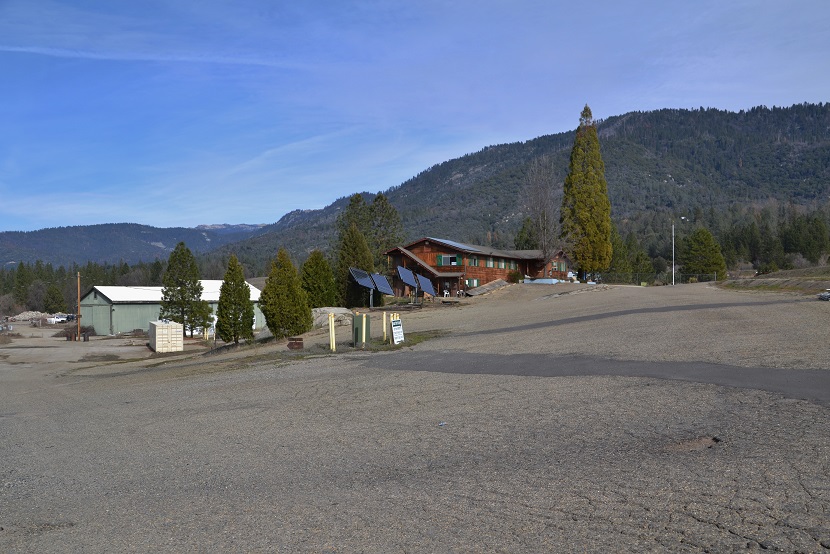NORTH FORK – After years of focused effort by local organizations, the North Fork biomass plant is now one giant step closer to reality.
The North Fork Community Development Council (NFCDC) has announced conditional approval for a nearly $5 million grant sought to build a 1 megawatt (MW) bioenergy generation facility at the town’s former mill site.
Organizers hired the Watershed Research and Training Center to apply for the California Energy Commission grant on behalf of the LLC formed to accommodate the proposed North Fork Community Power Forest Bioenergy Facility.
“It’s a conditional award,” says NFCDC President Dan Rosenberg. “We don’t know what the specific conditions are yet, but we’ve made it over a big hurdle.”
The NFCDC has been working toward this point for more than a decade, most recently in partnership with the Yosemite/Sequoia Resource Conservation and Development Council (Y/SRC&DC) and a diverse project team, including Elisa Brown of Sierra Nevada Conservancy (SNC).
The project has the potential to become a strategic step to producing green energy and finding economic uses for biomass material generated by forest management and hazardous field treatment activities in the area. It is also a vital step towards redeveloping the mill site and restoring the town’s economy.
“There were four grant applicants in the category that we applied under, and we’re the only ones to get the award,” Rosenberg continues.
“We’ve been working on this project for more than three years. All the previous work was done to establish this as the leading project in California under Senate Bill 1122, which requires independently owned utility companies to buy 50 MW of power each year from plants that are 3 MW or smaller, that generate power from sustainably harvested forest biomass.”
Biomass is biological material derived from living or recently living organisms. In this context of biomass for energy production the term refers to plant based material.
“One mega-watt is enough energy to power about one thousand homes,” according to Rosenberg. Providing all terms are met for conditional approval of the nearly $5 million award, he says the plant will take 12-18 months to build.
“The plant will be run for a few weeks in each of the four quarters of the year,” he says. “It may run for three weeks, then researchers will crunch data for three months, then run again for three weeks, when again, they’ll do research. Researchers are going to try different size chips, different moisture content, and run all the scientific variables to determine how to make this a more efficient process and make advancements. It’s a fairly old technology but this research project will really get it to the most efficient level. In the meantime, we can use the plant.”
The process to produce bioenergy does not involve burning. Rather, it is a closed system called pyrolysis, which heats the wood to a very high temperature, releasing gasses such as hydrogen that power a reconfigured diesel generator, creating electricity, along with a by-product known as biochar. Biochar used to be considered a throw-away, but is now sought after by agricultural companies for use as a soil amendment.
“The plant uses brush, limbs, tops and small diameter pieces from the forest, and it has to be chipped. Right now, that material is mostly piled and burned in the forest; we’re not using it. This will allow us to create jobs and use that material to produce something valuable: energy.”
The other by-product of the process is heat. A business on the mill site could use this supply of heat to grow hot-house tomatoes, orchids, or winter crops of vegetables. Private business could benefit from this on-site, affordable source of heat.
A benefit of the biomass plant would be improvements to the health of the forest, say proponents, both on public and private land. Finding economic uses for small scale woody debris from the forests has the potential to increase fire safety, improve ecological conditions and support local economies. Entrepreneurs wanting to start a wood chipping business would not only be removing debris and decreasing potential fire fuels, but would also be creating jobs in this area, which, said Rosenberg, is the mission of the CDC.
In terms of jobs, Rosenberg believes multiple full time jobs could result from the project, with one or two at the plant itself and others in the forest.
“Jobs would be created in chipping and trucking the material down the mountain.”
The option of delivering biomass to the plant in North Fork would also mitigate the burning of huge piles of slash in the forest, which is the current method of disposing biomass created from thinning or harvesting projects.
Organizers are in the process of determining who will buy the energy produced by the biomass plant, and what businesses are likely to be located on-site, which is a condition of the proposed grant.
“Lots of businesses are heat generated, and heat from the biomass plant could be used to heat buildings, or heat kilns. Wood comes in from the forest with a high moisture content, and it is possible we could dry the material before it goes into the gasification units. We might have a facility to dry wood chips.”
Rosenberg says the one of the most exciting elements of the project is its potential to put a value on the “waste” product, which will help fund future environmental restoration projects.
“This is a project that brings together green energy, sustainability and health of the forest, and jobs. We see people from all different parts of our community come together around this project, and it addresses a lot of our pressing needs. I think it’s a perfect fit for our community: a win-win.”
The North Fork Community Development Council is a nonprofit corporation whose mission is to promote the social, economic and environmental welfare of North Fork. The primary goal of the NFCDC is to redevelop the North Fork mill site, which operated from 1941 until 1994. The CDC endeavors to create jobs, green space, and community-serving facilities for the town of North Fork.
The Yosemite/Sequoia Resource Conservation and Development Council is a nonprofit organization that works to improve the economy, environment, and living standards of the foothill and mountain regions of Fresno, Madera, Mariposa and Tulare counties. Sponsors and partners range from tribal governments, environmental and community development organizations to county governments, resource conservation districts and more.
The Y/SRC&DC mission is to promote the quality and aesthetic values of the cultural, environmental, and recreational resources by improving the quality of life through sustainable, diverse economic development.




